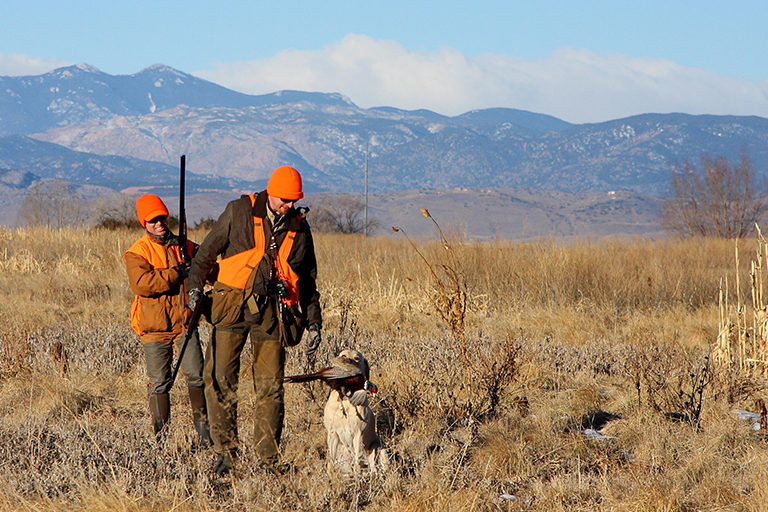By Dennis Smith
Pheasant under glass, you say? Never had it. I have had it roasted with fruit and nut stuffing, marinated in whiskey, skewered and grilled over hickory coals, braised, broiled and sautéed. But never under glass.
There are probably as many ways to prepare pheasant as there are to skin the proverbial cat, but the big deal, if you ask me, is that regardless of how it’s prepared, pheasant is a delicacy few of us ever get to enjoy. After all, it’s not as if you can wheel into the corner cholesterol joint and order one to go. Those of us who hunt may bag a pheasant every now and then, but, to be honest, we don’t bag too many of them. Pheasants do not come easy, particularly in Colorado where, with as much corn, wheat, millet and milo as we raise, you’d think we’d be swarming with the things.
We’re not. Not compared to Kansas, Nebraska or the Dakotas. In South Dakota, for example, hunters harvest more pheasants on opening day of the season than Colorado has pheasants. Due to a collectivity of geographical, biological, agricultural and sociopolitical reasons, we just don’t have many of the tasty birds here in Colorado.
Consider that more than half the state is mountain or desert, and pheasants can abide neither. There are your geographical reasons.
Pheasants need suitable nesting and roosting habitat in the way of grassy fields and swales. They love stands of cattails and brushy creek bottomland, but for several decades our farmers learned to drain wetlands, burn the edges of their fields to prevent infestation by noxious weeds and plant every available inch of suitable ground to maximize production. Every time you see a cloud of smoke spiraling up from a roadside irrigation ditch, you can bet somebody’s cooking pheasant eggs. We raise a fabulous grain crop, but not many pheasants. There are your biological and agricultural reasons.
The sociopolitical reasons center around our fascination for the native big-game animals: deer, elk, sheep and antelope. Colorado’s wildlife dollars have focused on those herds, and pheasants had to make do on their own. Until recently, that is.
In the early ’90s, Colorado Parks and Wildlife developed its Pheasant Habitat Improvement Program. Under the terms of the 1996 Farm Bill, wildlife became co-equal with soil and water use, and the Conservation Reserve Program rewarded farmers for planting marginal land and acreage with grasses for pheasants and other wildlife. The national wildlife conservation group Pheasants Forever began to kick in dollars and volunteer work shortly thereafter, and the tide is beginning to change for the big gaudy birds.
The Colorado pheasant season opens Saturday, November 11, and runs until January 31, 2018, in all units east of Interstate 25, and through January 7 in units west of I-25. Get out there and give it a try. You have to work hard, walk a lot of fields and, since the best hunting is usually on private land, will probably have to knock on a lot of doors to get permission to hunt. You might be lucky enough to bag a limit of birds. If you do, bon appétit.

